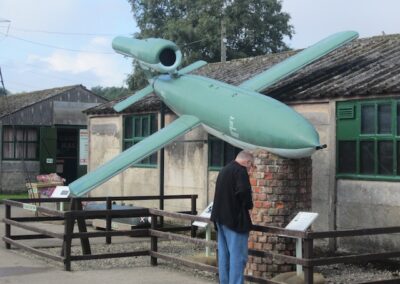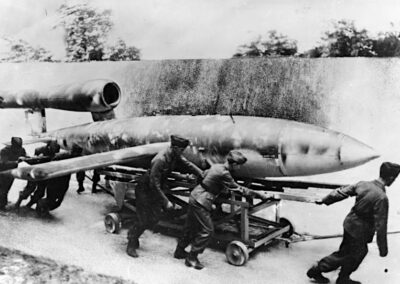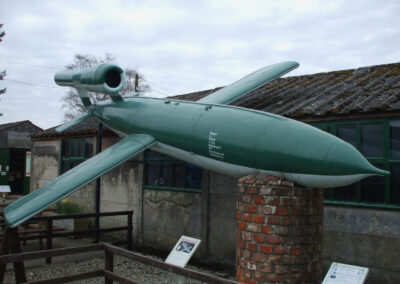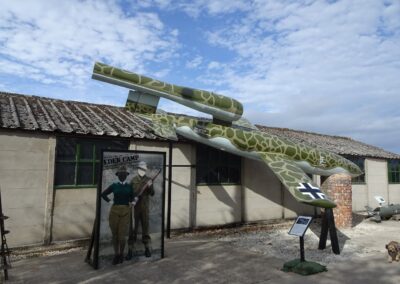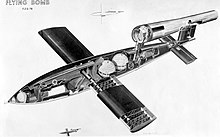V1 ROCKET
It’s History…
The V1 or Fieseler Fi 103 was 8m (26′ 3″) long, with a wingspan of 5.7m (18′ 9″) and carried a 850kg Amatol-39 warhead. The pulse jet engine, mounted above the fuselage, drew in air at the front. Petrol burned in a series of explosions, producing a jet of flaming exhaust gas from the tailpipe and the distinctive throbbing noise giving rise to the nickname “Buzzbomb.” The V1 was launched from fixed ramps at sites over the Channel or could be air launched from a modified bomber aircraft.
It was guided by a gyroscopic automatic pilot. The fuel was cut off automatically at a predetermined range. Out of 6725 V1’s that reached England, 2420 fell on London, killing over 6000 people, injuring nearly 18,000 and causing severe and widespread damage. Anti aircraft guns controlled by radar shot down 1859 of these flying bombs between June 1944 and March 1945.
The RAF were not to be denied their share of the action and downed a total of 1771 V1s. Only the Hawker Tempest, Spitfire Mk IX and the Gloster Meteor, had the speed to intercept these weapons. Pilots had to fire at only 180m (200yds) to be sure of a hit.
Travelling at 650km/hr (400mph) they had no time to avoid the subsequent explosion and flew through the centre of a fireball. Another technique used by some pilots was to fly alongside and place their wingtip under that of the V1 and gently raise it. This upset the “Doodlebug’s” gyroscopic guidance system and sent it crashing to earth. This was the technique used by Fl.O. Dean on August 4th 1944 when the guns on his Meteor Fl aircraft jammed, the first recorded interception by the allies first jet fighter.

